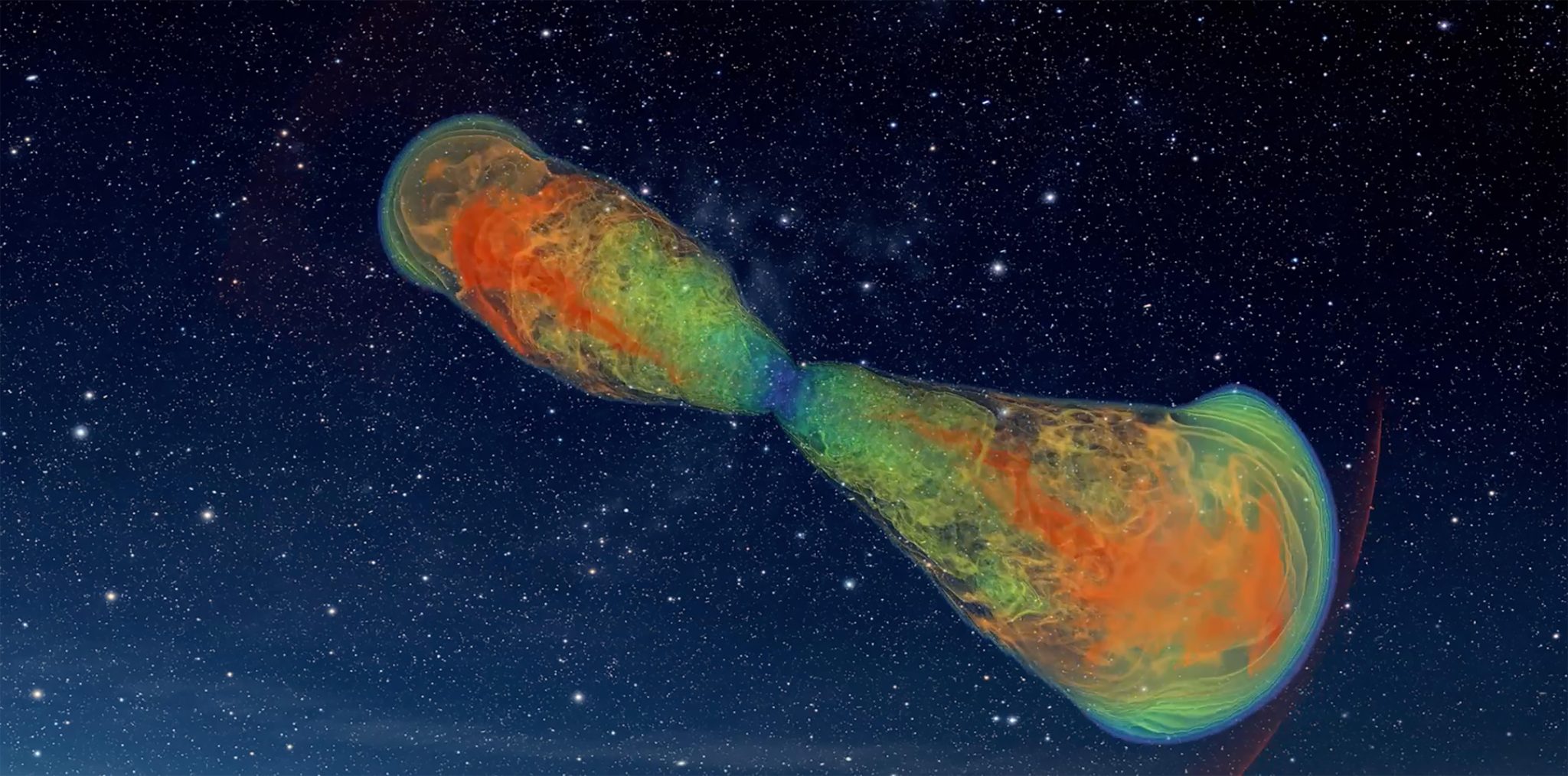India's Giant Metrewave Radio Telescope (GMRT) was one of the world's six large telescopes that played a key role in finding the first direct evidence for the relentless vibrations of the fabric of the universe, caused by ultra-low frequency gravitational waves.
"We are within a whisker of achieving such a dynamic range where one can finally listen to the bass sections in this cosmic gravitational-wave-symphony," said Pratik Tarafdar of The Institute of Mathematical Sciences, Chennai.
Such waves are expected to originate from a large number of dancing monster black hole pairs, several million times heavier than the Sun, the scientists said.
"It is fantastic to see our unique uGMRT data being used for the ongoing international efforts on gravitational wave astronomy," said Yashwant Gupta, Centre Director at National Centre for Radio Astrophysics (NCRA), Pune, which operates the GMRT.
The team's results are considered as a crucial milestone in opening a new, astrophysically-rich window in the gravitational wave spectrum.
Scientists of the European Pulsar Timing Array in collaboration with the Indo-Japanese colleagues of the InPTA arrived at the findings after analysing pulsar data collected over 25 years with six of the world's largest radio telescopes.
This includes more than three years of very sensitive data collected using the unique low radio frequency range and the flexibility GMRT, which underwent significant upgrades in 2019.
"The results reported by the EPTA+InPTA collaboration are tantalisingly close to the discovery of nano-hertz gravitational waves and are the culmination of many years of efforts by many scientists including early career researchers and undergraduate students," said Prof. Shantanu Desai of IIT, Hyderabad.
The InPTA experiment involved researchers from NCRA (Pune), TIFR (Mumbai), IIT (Roorkee), IISER (Bhopal), IIT (Hyderabad), IMSc (Chennai) and RRI (Bengaluru) along with their colleagues from Kumamoto University, Japan.
The 100-m Effelsberg radio telescope in Germany, the Lovell Telescope of the Jodrell Bank Observatory in the United Kingdom, the Nancay Radio Telescope in France, the Sardinia Radio Telescope in Italy and the Westerbork Synthesis Radio Telescope in the Netherlands were used for observations.
India's Giant Metrewave Radio Telescope (GMRT) was one of the world's six large telescopes that played a key role in finding the first direct evidence for the relentless vibrations of the fabric of the universe, caused by ultra-low frequency gravitational waves.
Such waves are expected to originate from a large number of dancing monster black hole pairs, several million times heavier than the Sun, the scientists said.
The results are considered a crucial milestone in opening a new, astrophysically-rich window in the gravitational wave spectrum.
International Conference on Gravitational Waves
visit:gravity.sfconferences.com
Nomination link:https://x-i.me/granom
#IndiaRadioTelescope #UniverseVibrations #AstronomyBreakthrough #CosmicDiscoveries #RadioAstronomy #SpaceExploration #ScientificAdvancement #IndianScience #BiggestTelescope #CosmicSignals #StellarObservations


.jpg)







